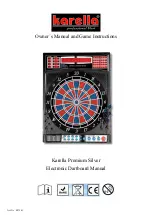
50
As a policy of continual improvement, RMF reserves the right to alter the specification without prior notice.
201.028 REV 1
Date of Issue: 18 June 2018
6.4.3.2 Time Multiplexed Schemes
These output the result parameters on a single output (A) in a timed sequence. This mode would be used to read
the result parameters in to a PLC. The PLC would need to be programmed to read each parameter at the correct
time.
These modes are still under development; please contact RMF Systems for details.
−
We output a current <5mA (4.0mA) for 1 second to indicate start of "frame", this is denoted by <SYNC> in the
following examples. The PLC needs to continuously check for this condition so that it can start the timer
sequence for acquiring the results.
−
Parameters are output in a sequence, one parameter per second until the end of the list.
−
We use an "out of range" current of >20mA (24mA) to indicate parameter not available.
−
The sequence is then repeated
RH Coding
The RH value is encoded according to the formula:
mA = 6 + (RH% / 10)
Or
RH% = (mA
–
6) * 10
So 0% RH =6mA, 100% RH =16mA (max legal measurement value), unavailable = 24mA
Temperature Coding
The temperature in degrees C is encoded according to the formula:
mA = 10 + (°C / 10)
Or
°C = (mA
–
10) * 10
NAS1638, AS4059E1, ISO11218
Parameters are output in the sequence:
<SYNC> <CLASS> <CLASS 5-15um> <CLASS 15-25um> <CLASS 25-50> <CLASS 50-100> <CLASS 100+> <RH> <TEMP>
<...>
These contamination classes are encoded as:
Class = mA -7
For example: Class 00 = 6mA, Class 0 = 7mA, Class 1 = 8mA,... Class 12 = 19mA, off scale = 20mA
ISO4406
Parameters are output in the sequence:
<SYNC> <ISO4> <ISO6> <ISO14> <ISO21> <ISO25> <ISO38> <ISO50> <ISO70> <RH> <TEMP> <...>
Содержание CMS 2
Страница 1: ...User Manual CMS2...
















































